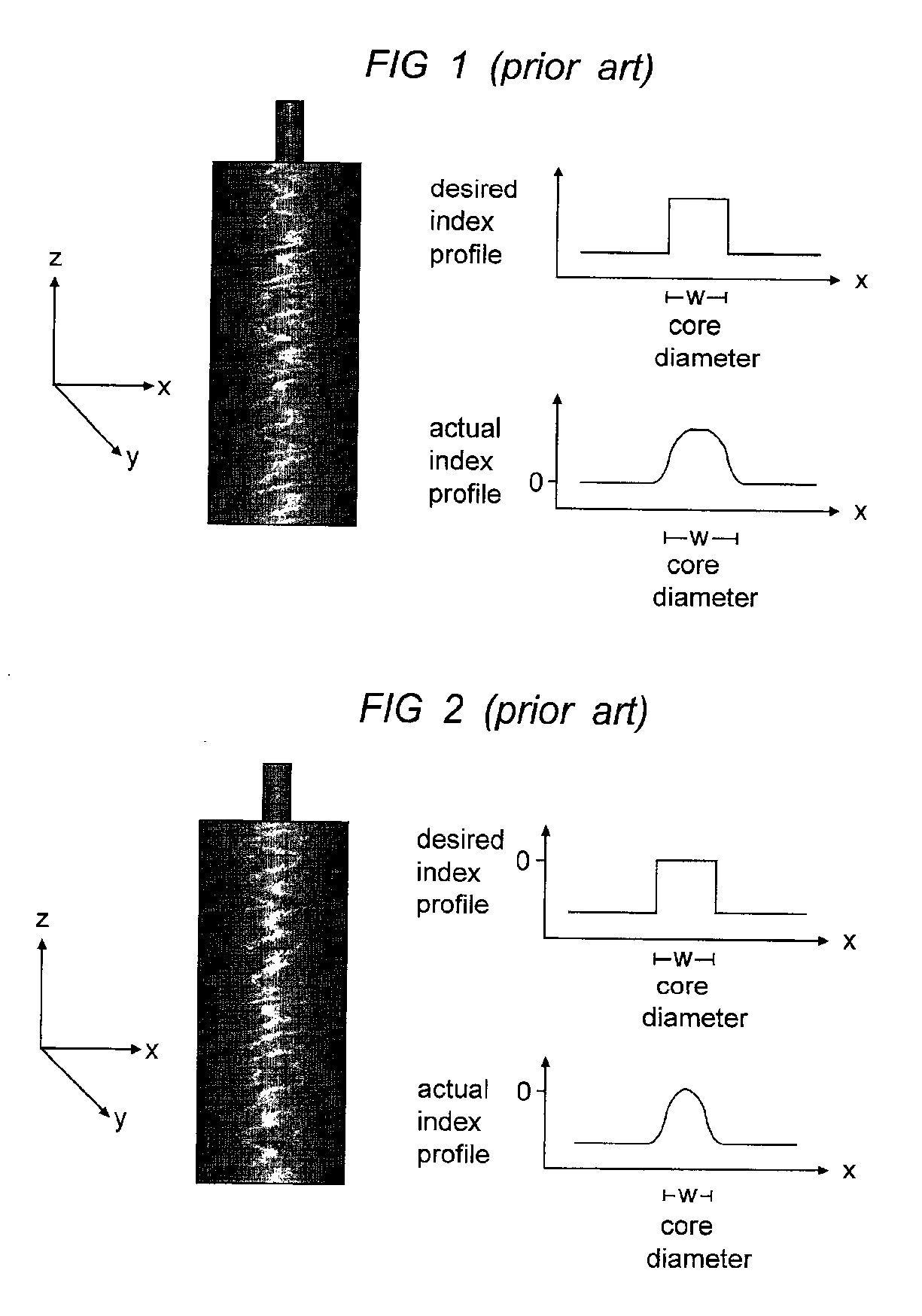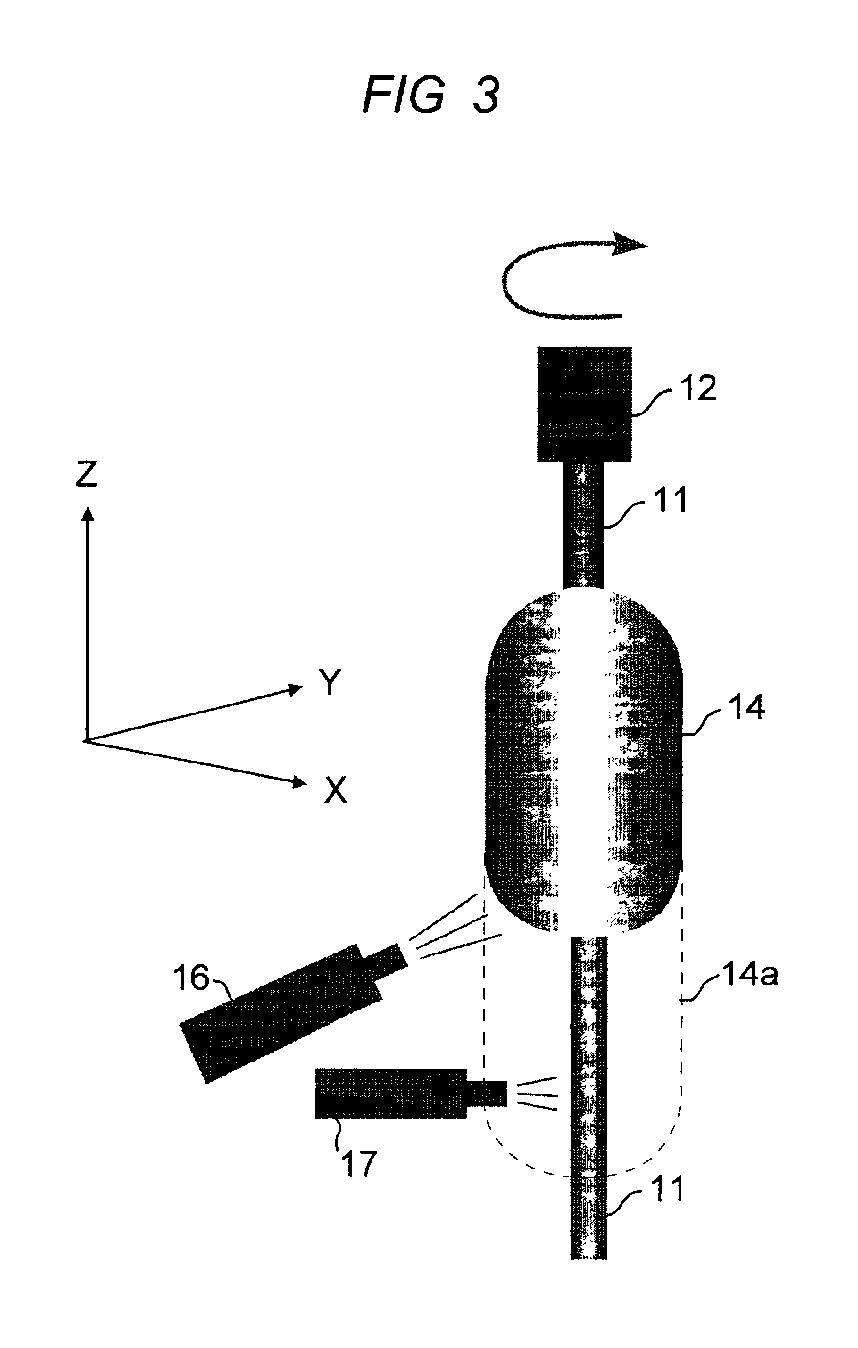Optical fiber preform manufacture using improved VAD
a technology of optical fiber and vad, which is applied in the field of vad processes for manufacturing optical fiber preforms, can solve the problems of undoped preforms, fiber profiles that require a relatively sharp interface between deposited layers, and conventional vad processes that are not ideally suited to producing sharp index gradients,
- Summary
- Abstract
- Description
- Claims
- Application Information
AI Technical Summary
Benefits of technology
Problems solved by technology
Method used
Image
Examples
example 1
[0025]A soot preform was prepared using the dual torch arrangement shown in FIG. 3. The core rod was silica doped with 3.5% Ge. Pure silica soot was deposited while the core rod was pulled at a rate in the range 40-100 mm / hr. The pulling rate is automatically adjusted according to the growth rate of soot on the preform. The growth rate of soot is monitored by a laser that senses growth in the z-direction by directing a beam at the tip of the preform and measuring beam extinction. The pulling speed is measured by measuring the z-axis displacement of the pulling rod 12 in FIG. 3. The flow rate for SiCl4 was 1500 cc / min. Flow rates of the gases supplied to the deposition torch, including the fuel gases, will vary widely depending on the design of the apparatus used. The gas supply to cleaning torch 17 comprised the fuel gases hydrogen and oxygen, and 200 cc / min CF4. Refractive index profiles with preforms produced by this technique uniformly reflect sharp index transitions, and precise...
example 2
[0026]The same general method described in Example 1 was followed except that in this example the center core rod is pure silica and the soot deposited was fluorine doped. Again the result is sharp and controlled profiles.
[0027]After deposition of the soot and formation of the porous soot cladding layer, the porous layer is then consolidated by heating to a temperature sufficient to melt the silica particles (doped or undoped) into a solid, dense, glass preform. Consolidation is typically performed by heating the soot body to a temperature of 1400° C. to 1600° C. The solid preform is then ready for mounting in a fiber draw apparatus and drawing optical fiber, which will be discussed below.
[0028]The examples described are useful for producing a variety of types of preforms. It is especially well adapted for preparing core rods with a primary cladding layer. As indicated earlier, outside cladding may be made using other, less expensive, techniques. Accordingly, it is often useful to e...
PUM
| Property | Measurement | Unit |
|---|---|---|
| flow rate | aaaaa | aaaaa |
| temperature | aaaaa | aaaaa |
| diameter | aaaaa | aaaaa |
Abstract
Description
Claims
Application Information
 Login to View More
Login to View More - R&D
- Intellectual Property
- Life Sciences
- Materials
- Tech Scout
- Unparalleled Data Quality
- Higher Quality Content
- 60% Fewer Hallucinations
Browse by: Latest US Patents, China's latest patents, Technical Efficacy Thesaurus, Application Domain, Technology Topic, Popular Technical Reports.
© 2025 PatSnap. All rights reserved.Legal|Privacy policy|Modern Slavery Act Transparency Statement|Sitemap|About US| Contact US: help@patsnap.com



